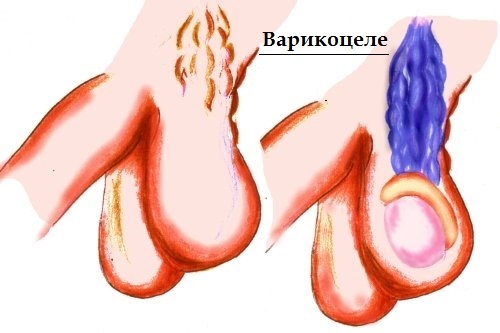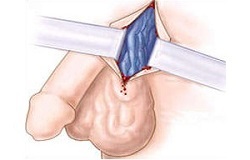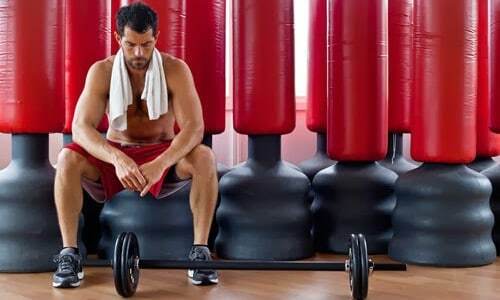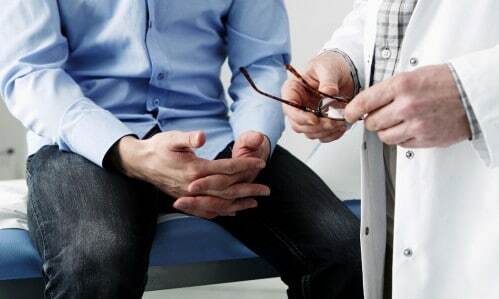Women often make mistakes thinking that their genitourinary tract is much more serious and dangerous than men. But due to some circumstances, representatives of the strong half often hide violations and malfunctions of their health, without giving them due importance. Such pathologies include varicocele, which is a varicose veins, located around the testicles and spermatic cord. Special attention deserves varikotsele 2 degrees, typical for men beyond age restrictions, but often occurs in adolescence after 14.

Varicocele is considered among men a very common pathology, which has quite unpleasant consequences. According to WHO, the prevalence of pathology is about 16% among all men. About a third of all cases occur in reproductive men. Almost always the pathology is one-sided( mainly on the left side) character( 98%), although in isolated cases, the bilateral development of the disease is possible. Varicose veins of the testicles are safe for life, because with it men are able to live for many years. The threat comes from possible complications of this condition, manifested by excessive pain syndrome and infertility.
The causes of varicocele
The underlying factor contributing to the occurrence of ovarian varicose veins is some disorder or complete dysfunction of the valvular valves that are required to prevent backflow. As a result of disruption of their functions, venous pressure rises and the vascular bed increases, ie, varicose veins located around the spermatic cord.
For the prevention of pathology in families where there are boys, it is recommended that you carefully treat the condition of the testicles of a boy and regularly undergo a preventive examination.
Specialists identify a group of causes that can lead to the development of varicocele:
- Special anatomy of the mesenteric artery and renal vein, which consists in the formation of aortosemetic tweezers. With such a pathology, the left vein of the kidney is impaired, which causes the primary varicocele.
- Benign or malignant neoplasms, somehow infringing the veins that form the lobate plexus.
- Hereditary predisposition of the organism to venous varicose veins.
Chronic disorders of the stool, causing excessive blood flow to the pelvic area and provoking varicose veins. - Reducing the venous lumen leading to increased venous pressure and stretching of the veins, this is predisposing to the occurrence of varicose veins. Venous lumen may decrease due to scarring, vascular inflection, vein compression by other vessels.
- Excess weight, overloading the body and causing venous infringement.
- Professional costs like dragging heavy weights, leading to excessive blood flow to the small pelvis, subsequent pressure increase and development of varicocele.
- Various kinds of inflammatory processes.
- Sexual life, devoid of regularity, which leads to pelvic stasis, which indirectly leads to the appearance of varicocele.
- Often varicocele is a concomitant complication of venous varicosity of limbs, valvular myocardial defects, phimosis, flatfoot, etc.
Clinic of pathology
Most often, pathology begins to develop in adolescence, at short intervals the disease reaches a certain stage and ceases its progression. Varicocele very rarely goes from degree to degree. Pathology usually does not manifest itself in any way, revealing itself in an accidental survey. The most common varicocele is 2 degrees, when the venous expansion is detected when standing, sometimes in a prone position. The expanded wreaths in the groinlike form descend below the level of the testicle. Sometimes in a relaxed state, there is a noticeable asymmetry of the affected testicle.
The main distinguishing feature of the disease in its second degree is the pathological growth of the venous plexus.
In a number of cases, patients note the onset of pain syndrome, which worries them when walking. The pain syndrome is not of a permanent nature, but occurs after certain loads, such as zealous physical activity, after a hot bath or sexual contact. Soreness can differ in different intensity and is accompanied by signs of increased sweating, potency disorders, burning in the scrotum, etc. Pain can be localized directly in the affected testicle or spread throughout the inguinal region, differing in pulling character. It is especially dangerous when varicocele is characterized by a chronic course, since this form of pathology can cause male infertility.
Methods of therapy
 Varicose ovarian veins are palpated when the patient occupies a standing position and tuzhitsya. In this case, there are obvious external changes in the testicle, and when probing, changes in the consistency of the testicle, if any, are revealed. If there are doubts about the reliability of the diagnosis, ultrasound is assigned to the testicles. Sometimes, when performing ultrasound, Doppler ultrasound is used to determine the condition of the veins, the nature of the blood flow, and the presence of a reverse blood supply. To identify functional disorders of the testicles, a spermogram is shown.
Varicose ovarian veins are palpated when the patient occupies a standing position and tuzhitsya. In this case, there are obvious external changes in the testicle, and when probing, changes in the consistency of the testicle, if any, are revealed. If there are doubts about the reliability of the diagnosis, ultrasound is assigned to the testicles. Sometimes, when performing ultrasound, Doppler ultrasound is used to determine the condition of the veins, the nature of the blood flow, and the presence of a reverse blood supply. To identify functional disorders of the testicles, a spermogram is shown.
Special indications for surgery are atrophy of the affected testicle, cosmetic defect, severe pain syndrome and infertility.
For the effectiveness of therapy of the 2nd degree of pathology, an operative intervention is necessary, which is expedient to resort to in case of severe soreness or infertility. The main treatment involves the following surgical techniques:
- Open surgery, in which the patient is made on the scrotum cut to remove damaged veins through it. Then the incision is sewn and the seam is closed with a sterile dressing.
- Endoscopy, which involves the removal of damaged veins with the help of specialized devices that design the image on the screen. This method is characterized by minimal traumatization and the lowest risk of development of possible postoperative complications.
- Sclerotherapy of veins, when a puncture is made in the femoral inguinal vein and a catheter is inserted into it, through which a sclerosing substance is introduced into the affected vein, which as a result stops the blood flow in the affected vein.
Surgical treatment with the above methods has a lot of advantages, because they are characterized by minimal blood loss and the least postoperative rehabilitation. Usually, after an operation for a month, it is necessary to exclude sexual relations and physical overloads, as well as nutrition according to a specialized diet that restricts bitter, acute and salty foods. Common postoperative complications are swelling of the scrotum or testicle, lymphatic infection, dropsy or excessive soreness in the testicle. Such side effects disappear after some time on their own.
Practice shows that surgical intervention improves spermatogenesis after at least 5 years after it is performed.
With the use of microsurgical or laparoscopic surgical intervention, ovarian atrophy, damage to the seminal artery, and reproductive dysfunction are completely excluded. Such methods exclude the re-development of varicocele or postoperative relapse of pathology. After the operation, it is possible to develop endocrine infertility, which appears as a morphological spermatozoon disorder and a disorder of spermatogenesis. It is rare enough after the operation to develop immune infertility, in which the patient's immune system refers to the testicles and spermatozoa, as to foreign ones, constantly attacking them.
Most urologists hold the view that it is impossible to get rid of varicocele in conservative ways. But according to observations, at the stages of early development, it is possible to eliminate varicocele without operational measures. Experts recommend that at 1-2 degrees of the disease, regular massage procedures. To do this, the patient must take a horizontal posture, lifting the pelvic area, which will help to reduce blood flow from the scrotum during the massage. The force of pressure during massage should not cause painful sensations. To conservative methods of therapy also include physical exercises. It is useful to raise and fall on toes, to make leans forward, to stand on the heels, etc. But such methods are very rarely effective for 2 degrees of pathology, therefore, surgical treatment is more often used.
Prevention of
Specialists recommend that men of any age should properly prevent varicocele. Since the pathology is observed mainly in adolescents, at this age it is recommended to undergo periodic preventive examination. And approximately at the age of 20 every young man needs to visit a urologist. Sexual maturity to this age is already finally formed and in the absence of signs of pathology, do not be afraid of its occurrence in the future. Full rest, rational nutrition, HLS, sufficient intake of vitamins - all these conditions are extremely important in the prevention of varicocele.



